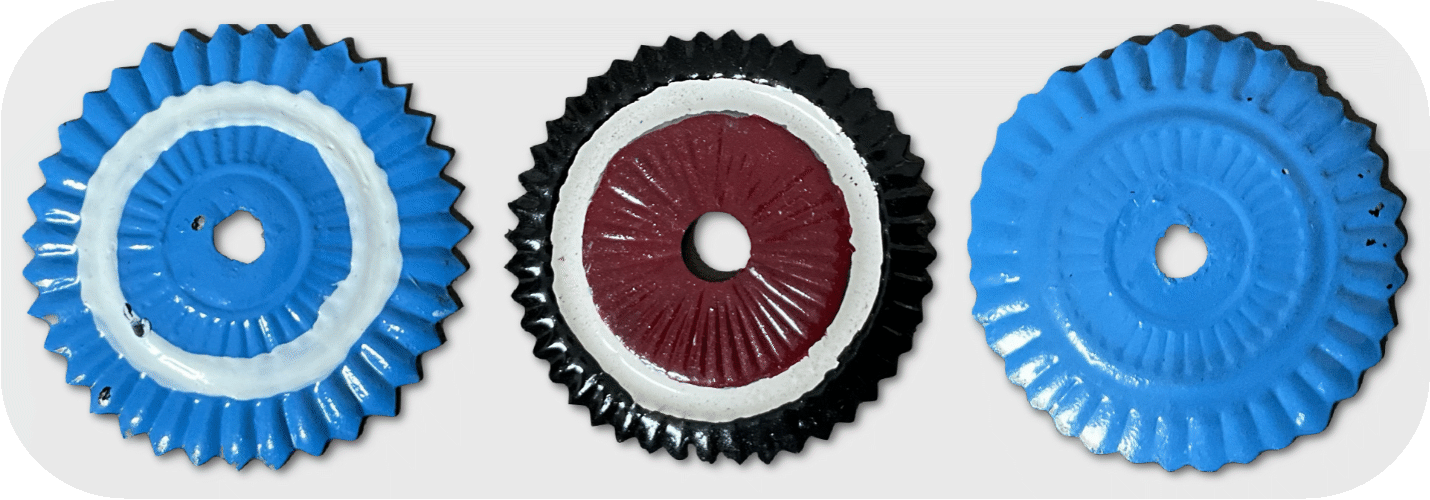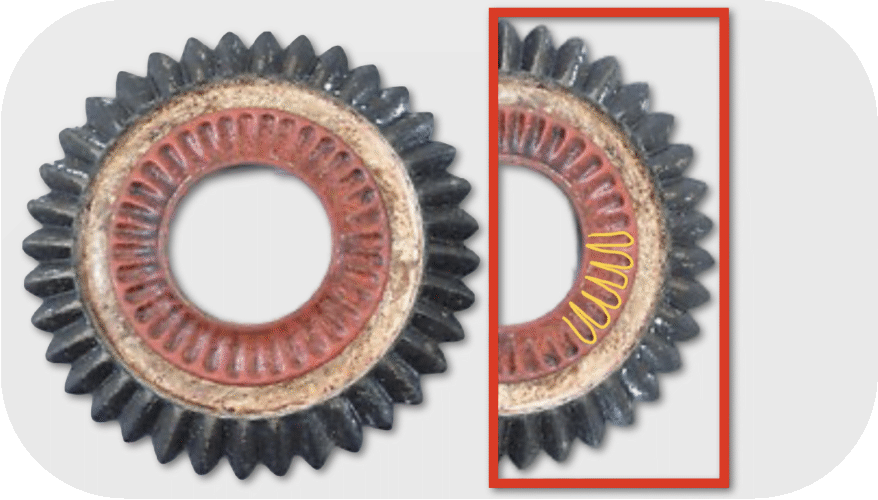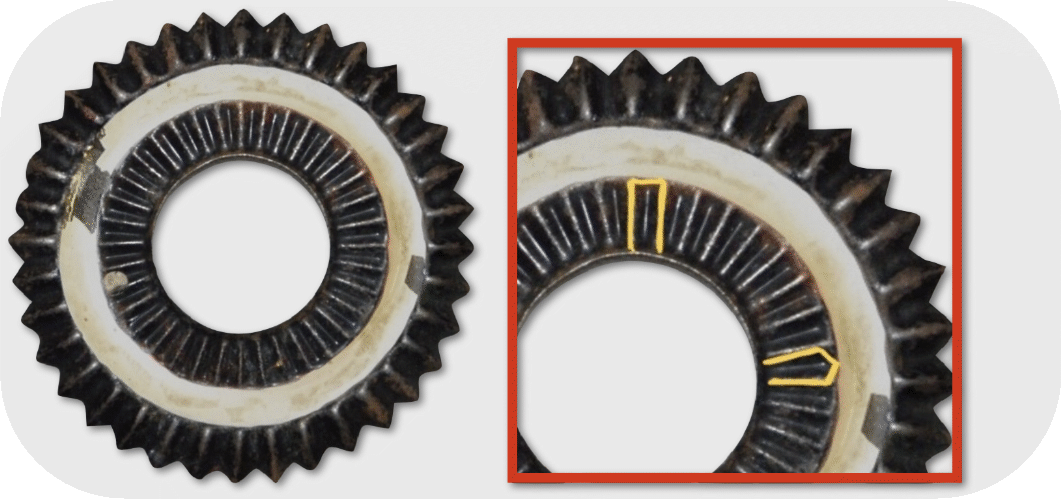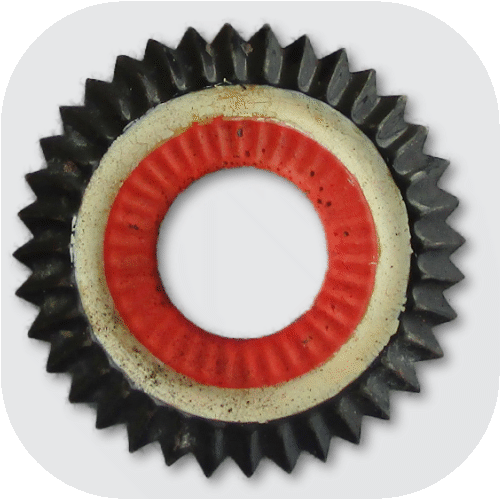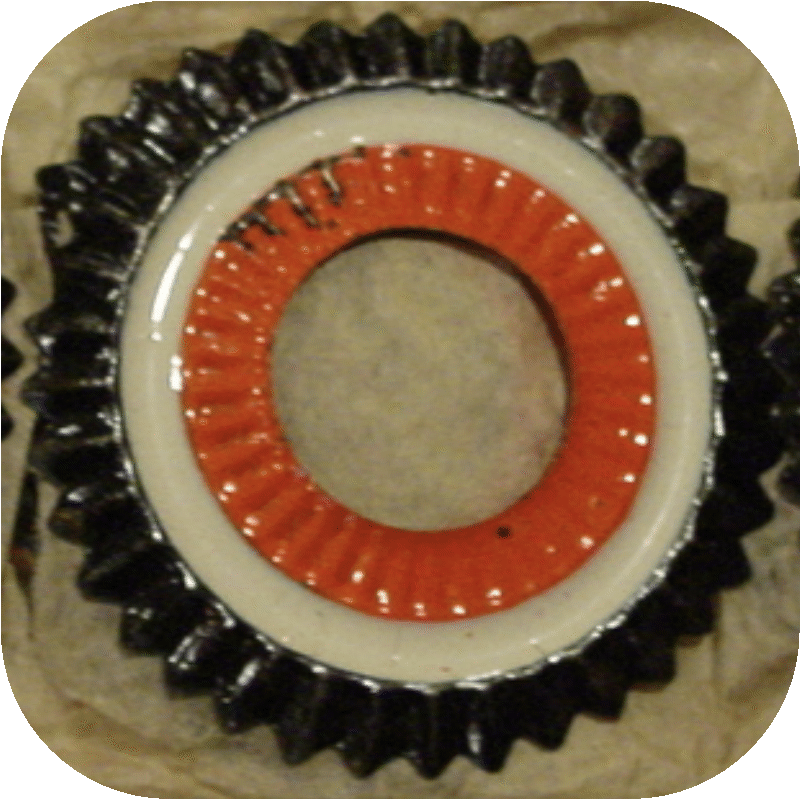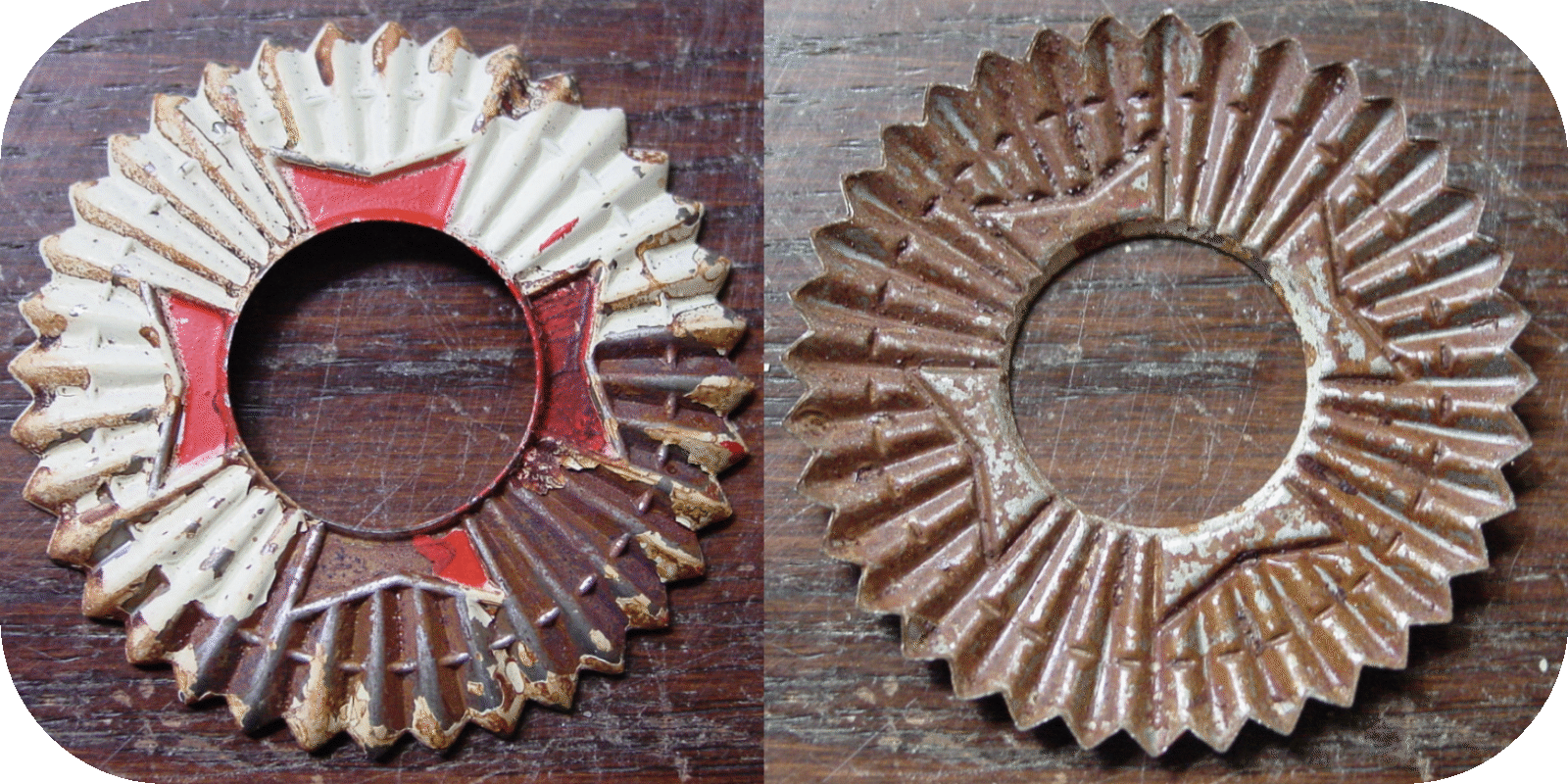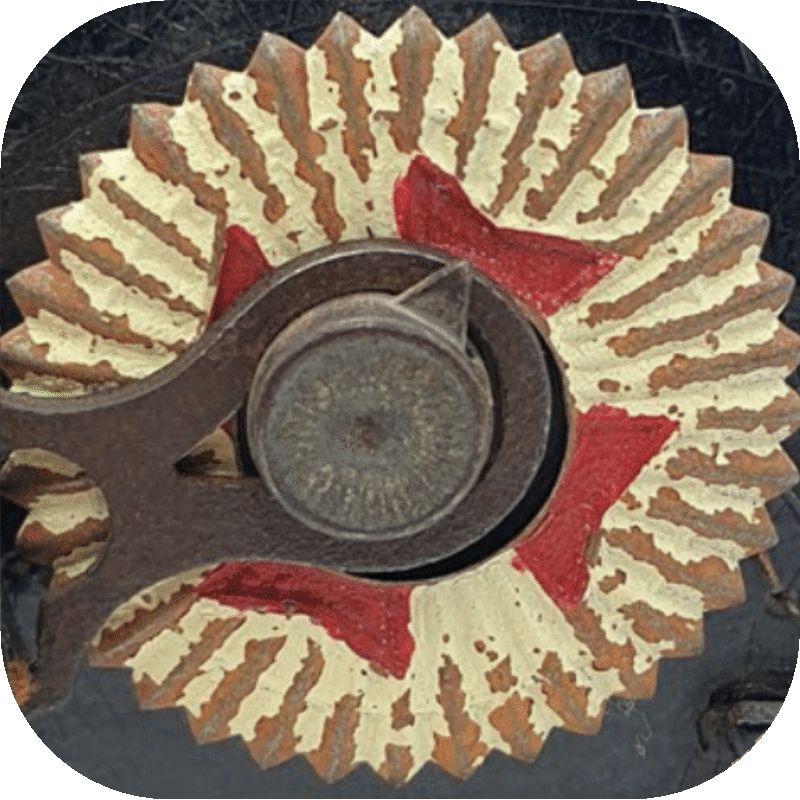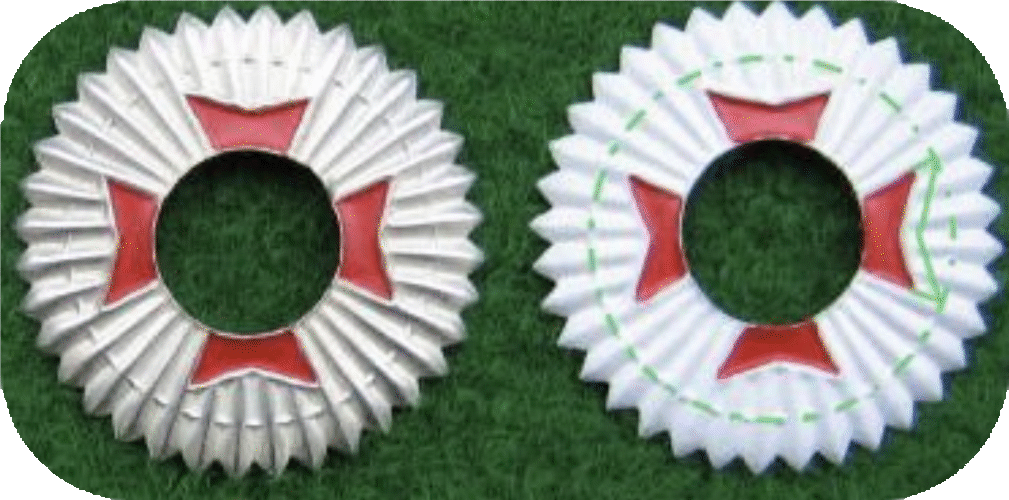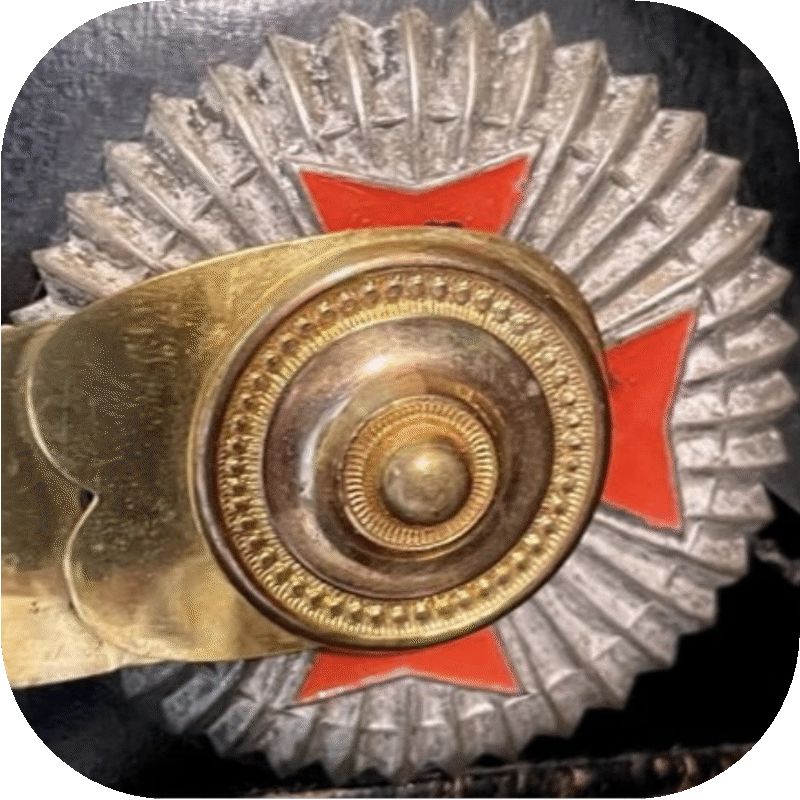Reproductions or „Fake“ cockades
Cockades are unfortunately the most faked parts for the pickelhaube. For collectors it is therefore especially important to be able to recognize such fakes as well as possible. However, since the cockade reproductions have become better and better, and still are, unfortunately it will probably not always succeed. But it is worth a try in any case!
To begin with, a few general tips for recognizing the simplest repro cockades:
- The first fakes were made of non-magnetic pewter. Original cockades were mostly made of iron and thus magnetic.
- The paint (especially the white lead paint) on the original cockades shows small cracks over time, often causing smaller pieces to chip off. This is difficult to replicate.
- Artificially aged cockades sometimes have an applied patina that can be rubbed off. A real patina can never be rubbed off. However, there are also machines with which a decades-long abrasion is to be imitated. However, this artificial wear also does not look like a real wear, because real wear does not occur everywhere, while artificial wear usually affects the protruding edges and surfaces fairly evenly.
- The colors of the cockades yellow with time. This yellowed shade is also not always well matched by counterfeiters.
Classification of cockade reproductions into different categories:
The reproductions of category II are already somewhat more elaborately worked. They come mainly from France, but are also offered by the manufacturer as reproductions in steel and brass plate.
HOWEVER, OTHER SELLERS WITH DISHONESTLY INTENTIONS SELL THEM AS ORIGINALS
- Typical of this category is the shape of the "rays" inside the cockade ring. Where they meet the inner edge, the ridge, of the ring, the pressings have a rounded end, making the center of the cockade resemble the flower of a daisy, quite unlike a true cockade (Fig. 2). The curves are sometimes more sometimes less pronounced, which is why it is not always easy to immediately recognize the reproductions of category II.
With the copies of category III it becomes even more difficult. In fact, this category comes very close to authentic original cockades. The following repro cockade (Fig. 2) is already very well produced:
- The difference is that the "rays" (just like in the Cat. II) do not touch the ridge on the inner side of the cockade ring evenly (Fig. 3 middle). On the original, they always touch it evenly!
- Furthermore, the shadows of the inner "rays" in Category III copies always look quite rectangular, regardless of the angle, while they differ in the original 12 o'clock and 16 o'clock cockades (see Fig. 3 right and Fig. 4):
- The colors alone prove that the cockades shown in Fig. 5-7 are authentic. Orange discolored vermilion, stoneware white and the slightly faded black are perfect.
- Corrosion often forms under the paint. Moisture penetrates through minute cracks under the paint, causing the sheet metal to corrode under the paint. This is also difficult to replicate.
- In cockades, the ridge is mostly clearly accentuated at the edges of the cockade ring, but always evenly. However, due to thickly applied paint, it is not always easy to see. In some cases, unfortunately, the pressing was also applied with too little pressure, which is why some originals also do not have such clearly accentuated edges. In these cases, the focus should be clearly on the uniformity and on the other criteria.
- The "rays" in the center are less flower- or drop-shaped than in the copies. Depending on the viewing angle, they appear almost square. The different shadows at 12 and 16 o'clock (Fig. 4) are also a good feature.
- The "rays" also go all the way to the edge of the cockade ring and of the mounting hole, which is somewhat bent up. In copies, this is often flat.
Hanseatic reproduction cockades:
Fig. 10 on the left shows a reproduction of a silver cockade for a non-commissioned officer and on the right a white M97 for enlisted men. In green I have drawn the outline of the "swallow tail" of the Maltese Cross, as it should actually look like on a real enlisted cockade.
The corners of the dovetails should touch the pressed-in thin ring. In previous copies, the length of the dovetails was always too short, from which it can be easily seen. The length of the dovetails is about 45% of the length of the radius!
Fig. 11 shows a real officer's cockade, where the pressing of the Maltese cross correctly touches the thin line of the circle. The length of the dovetails is thus about 55% of the length of the radius on the original!
